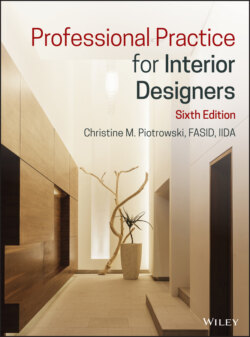Читать книгу Professional Practice for Interior Designers - Christine M. Piotrowski - Страница 36
Curriculum Accreditation
ОглавлениеThe 20th century saw many changes in design education. As the century progressed, a number of formal college course and programs in interior decoration became available across the country. The profession became more formalized and began to change its image from that of the untrained decorator to that of the trained professional.
Yet, these new educational programs caused concerns about educational requirements and programs that evolved during the 1940s and 1950s. The professional organizations supported the creation of an accrediting agency to help standardize interior design education. In 1970, the Foundation for Interior Design Education Research (FIDER) was founded to provide voluntary accreditation. This organization had great success in accrediting programs across North America. In 2006, the FIDER board voted to rename the organization the Council for Interior Design Accreditation (CIDA). This nonprofit organization, recognized by the Council on Higher Education Accreditation (CHEA), is considered the reliable authority on the quality of postsecondary interior design education in North America. Accreditation of a program indicates to the student that the curriculum meets educational standards that are accepted and supported by the profession of interior design.
The CIDA “has been passionately committed to the ongoing enrichment of the interior design profession through identifying, developing and promoting quality standards for the education of entry‐level interior designers.”* The council continues to develop and evaluate educational standards in interior design programs as a means of granting accreditation. These standards are reviewed from time to time, and the full details of the updated standards are available on the Web site, www.accredit‐id.org/resources.
CIDA accredits a single type of program of interior design education, the professional‐level program. The program must result in a minimum of a bachelor's degree and must include classes in the arts and sciences, as well as courses specific to interior design and other specific standards detailed in the Professional Standards document available from CIDA. Other types of programs including Master's degrees and online programs may meet CIDA standards. Information on these kinds of topics should be researched from the CIDA Web site for the most current standards. This would include programs outside the United States.
Accreditation of an interior design program is a voluntary process of self‐study and measurement of the curriculum against the CIDA standards. This self‐study investigates the quality of programs as meeting the needs of professionals in the current market. After the self‐study, a group of site visitors conducts reviews of materials and discussions with faculty, students, and administrators. Accreditation is not forever; a program must be reevaluated every six years.
* Council for Interior Design Accreditation, 2006, Accreditation Manual, p. 1–1.
